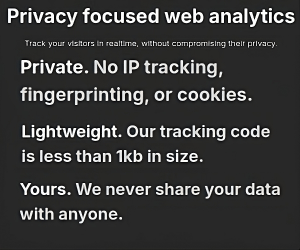Practicing Good OpSec (Operational Security): A Comprehensive Guide
Practicing Good OpSec (Operational Security)
Operational Security, often abbreviated as OpSec, is a systematic approach to protecting sensitive information by identifying and mitigating potential security risks. Originally a military concept, OpSec has expanded into the corporate world and everyday life, especially in the age of digital information. By practicing good OpSec, individuals and organizations can protect their personal, financial, and operational data from falling into the wrong hands.
This article delves into the core principles of OpSec, explains why it’s essential in today’s digital landscape, and provides practical steps for implementing strong OpSec practices.
What is OpSec?
OpSec is a methodology that identifies and protects sensitive data that, if exposed, could harm an individual or an organization. The goal is to prevent adversaries from collecting information that can be used against you, whether through cyber attacks, espionage, or even physical threats.
The practice of OpSec is not limited to advanced technology or cybersecurity professionals. It is a mindset that can be applied in any environment, from protecting your personal email and financial details to safeguarding a company’s intellectual property or even military secrets.
The Five Steps of OpSec
The core of OpSec revolves around five critical steps that help identify and mitigate security vulnerabilities:
- Identify Critical Information The first step in practicing OpSec is to determine what information is critical and needs to be protected. Critical information can vary based on the context but often includes:
- Personal identifiable information (PII) like social security numbers, credit card details, and home addresses.
- Company trade secrets or intellectual property.
- Sensitive military or government operational plans.
- Financial or transactional information.
- Analyze Threats Once critical information is identified, the next step is to determine who might be interested in accessing this information. This could be:
- Hackers aiming to steal personal data for identity theft.
- Competitors looking to obtain trade secrets.
- State-sponsored cyber attackers engaging in espionage.
- Cybercriminals attempting phishing attacks or ransomware.
- Analyze Vulnerabilities After identifying threats, it’s essential to look at where vulnerabilities exist that could expose critical information. These vulnerabilities might be:
- Weak passwords.
- Outdated software.
- Unsecured networks.
- Poor employee training in cybersecurity protocols.
- Assess Risks In this step, you analyze the likelihood of a threat exploiting a specific vulnerability. For example, if you store sensitive financial data on an outdated server that isn’t encrypted, there is a high risk of a data breach. The goal is to prioritize addressing the highest risks first, ensuring that the most critical vulnerabilities are managed quickly.
- Implement Security Measures The final step in OpSec is to take action. Once you’ve identified critical information, assessed threats, and pinpointed vulnerabilities, you must implement the appropriate security measures to mitigate the risks. These measures could include:
- Encrypting sensitive data.
- Updating software and applying security patches.
- Implementing two-factor authentication (2FA).
- Educating employees or individuals on cybersecurity best practices.
The Importance of OpSec in the Digital Age
In the age of digital connectivity, where personal data, business transactions, and critical information are shared and stored online, the importance of OpSec cannot be overstated. Cybercriminals, hackers, and even competitors are always on the lookout for vulnerabilities to exploit. Without good OpSec practices, you risk exposing sensitive information to adversaries who can misuse it for financial gain, identity theft, or corporate sabotage.
Data breaches are increasingly common, with attackers using techniques like phishing, malware, and ransomware to steal information. Businesses, in particular, face immense risks as breaches can lead to financial loss, damaged reputation, and legal consequences. Individuals are not immune, either—identity theft and personal data leaks can wreak havoc on your personal life, finances, and privacy.
By practicing good OpSec, you are proactively securing information against such threats, reducing the risk of exploitation.
Practical Steps for Practicing Good OpSec
Good OpSec involves both a mindset and a set of practical steps you can implement. Here are some strategies for maintaining strong OpSec in your daily life or business operations:
1. Use Strong, Unique Passwords
A common vulnerability in digital security is weak or reused passwords. Always use strong passwords that combine letters, numbers, and special characters. Moreover, never reuse passwords across multiple accounts. A password manager can help you securely generate and store unique passwords for different services.
2. Enable Two-Factor Authentication (2FA)
Two-factor authentication provides an additional layer of security beyond just a password. With 2FA, even if a hacker gets hold of your password, they will still need a second form of verification (e.g., a code sent to your phone or email) to access your account.
3. Encrypt Sensitive Data
Encryption is a crucial tool in protecting sensitive information. Whether you’re storing data on a hard drive or transmitting it over the internet, encrypting it ensures that even if it falls into the wrong hands, it can’t be read without the proper decryption key.
4. Be Aware of Phishing Attempts
Phishing attacks, where attackers impersonate legitimate organizations to steal sensitive information, are one of the most common cybersecurity threats. Be cautious when receiving unsolicited emails or messages, and never click on suspicious links or provide personal information.
5. Use a VPN (Virtual Private Network)
A VPN masks your IP address and encrypts your internet traffic, making it harder for hackers to intercept or track your online activities. This is particularly important when using public Wi-Fi networks, which are often unsecured.
6. Limit Sharing on Social Media
Social media platforms are a goldmine for attackers looking to gather personal information. Limit the amount of personal information you share publicly, and regularly review your privacy settings to ensure you’re not inadvertently exposing sensitive data.
7. Keep Software Updated
Outdated software can have vulnerabilities that attackers exploit. Regularly update your operating systems, browsers, and other software to ensure that any known security holes are patched.
8. Educate Employees or Family Members
Many security breaches occur due to human error. It’s essential to educate employees, family members, or anyone handling sensitive information about the basics of OpSec. This could include recognizing phishing attempts, creating strong passwords, and understanding the risks of unsecured networks.
9. Monitor Your Digital Footprint
Be proactive about managing your online presence. Regularly search for your personal or business information online and take steps to remove or secure any sensitive data that may be exposed.
OpSec in the Corporate World
For businesses, practicing good OpSec is vital for protecting trade secrets, intellectual property, and customer data. Companies should create robust security policies that cover everything from password management to incident response plans. Regular security audits can help identify potential weaknesses before they are exploited.
Moreover, companies should ensure that third-party vendors and partners also follow strong security protocols. A breach at a vendor level can expose your business to significant risks.
The Role of Physical Security in OpSec
While much of OpSec is focused on digital security, physical security is equally important. Unauthorized access to your physical premises, such as an office or data center, can lead to data theft or sabotage. Implement measures like security cameras, access control systems, and secure storage for sensitive documents.
Conclusion
Good OpSec is about being proactive rather than reactive. It involves understanding the potential risks to your information, taking steps to mitigate those risks, and continually monitoring and adjusting your security practices. Whether you’re an individual looking to protect your privacy or a business safeguarding critical data, practicing strong OpSec is crucial in today’s interconnected world. By following the steps outlined in this guide, you can significantly reduce the chances of a security breach and protect your valuable information.











0 thoughts on “Practicing Good OpSec (Operational Security): A Comprehensive Guide”